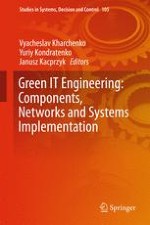This book presents modern approaches to improving the energy efficiency, safety and environmental performance of industrial processes and products, based on the application of advanced trends in Green Information Technologies (IT) Engineering to components, networks and complex systems (software, programmable and hardware components, communications, Cloud and IoT-based systems, as well as IT infrastructures).
The book’s 16 chapters, prepared by authors from Greece, Malaysia, Russia, Slovakia, Ukraine and the United Kingdom, are grouped into four sections: (1) The Green Internet of Things, Cloud Computing and Data Mining, (2) Green Mobile and Embedded Control Systems, (3) Green Logic and FPGA Design, and (4) Green IT for Industry and Smart Grids.
The book will motivate researchers and engineers from different IT domains to develop, implement and propagate green values in complex systems. Further, it will benefit all scientists and graduate students pursuing research in computer science with a focus on green IT engineering.
